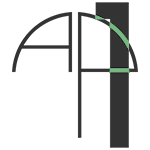Geoffrey Wildanger
Reviews Martha Ronk's Transfer of Qualities
Martha Ronk, Transfer of Qualities, Richmond, CA: Omnidawn, 2013. 79 pp.
Ronk's latest book takes as its title and epigraph a line from Henry James' The Sacred Fount, his great novel of intersubjective relations and how the subject is transformed by relating to other subjects. Ronk extends this along Jamesian lines to think about object relations as well. The book is divided in three sections: Objects, People, and Transferred Stories. Each section contains a series of prose pieces that intensely meditate on particular things and types of things (with one lineated poem concluding the section on Objects).
The transfer of qualities and that of stories turn out to be rather difficult to disassociate, as the investigation of the book presents the means in which object relations can take on a certain agency regarding human and non-human things. Object relations are always already poetic, she writes that: "Changing things in a room is what to do when everything is wrong with everything.... Each arrangement of objects suggests a rearrangement of ideas or words..." She sets up a transition from the questions of object relations to those of poetic practice. Continuing, "Ezra Pound revised 'A Station in the Metro' down from several paragraphs to a haiku with gaps between words. Perhaps the room should be stripped," Ronk puts into question here the history of the poetics of austerity. What is the possible value of an austere poetics that emphasizes the ostensible core of things rather than clutter them with, say, ornament?
However, this temptation, she claims, may be a false one. For while "one might wish for such austerity, such clarity, some sense that underneath were some authentic core rather than, as seems most true, that it is spread out all over the room, out the door, into the air and into the water supply spreading cholera in Haiti." Rather than forms of austerity that seek to discover an essential truth in objects, persons, poems, or stories, Ronk writes through a distributed plain of relations in which truths and forms of agency cannot be contained by any one thing. One model of this is the photogram, the type of photography made famous by Man Ray and Laszlo Moholy-Nagy, in which photographic paper is exposed to direct light. The paper captures the shapes cast on it by objects, but, without the benefit of a lens to focus these shapes, the objects leave an obscure trace, not a decipherable image. "Writing about the transfer of qualities between objects and people also works a kind of exchange as if the paper on which the words appear are like photographic paper, and as if the forms of the prose dissolved more boundaries than between prose and poetry."
A refusal of essence, of unity, while insisting still on the particularity of things and how meaning is made through relations between things, influences Ronk's formal choices. She turns formal choices against a history of austere poetics as a means to gather all the various traces, opening up the (always already uncontainable) authorial presence to include persons and objects beside the author. Ronk troubles the conventional approach the reader takes both to the prose poem and to the lineated poem. This leads to a lush, and rich, book, a gathering, the nature of which becomes explicit on a final page with references to various other texts that have transferred something to Ronk's writing.
Geoffrey Wildanger is a graduate student in the department of Comparative Literature at Brown University. He currently lives in Lyon, where he teaches at the University of Lyon II. Previous work has appeared or is forthcoming in Transmission Annual and Women and Performance: A Journal of Feminist Theory.
